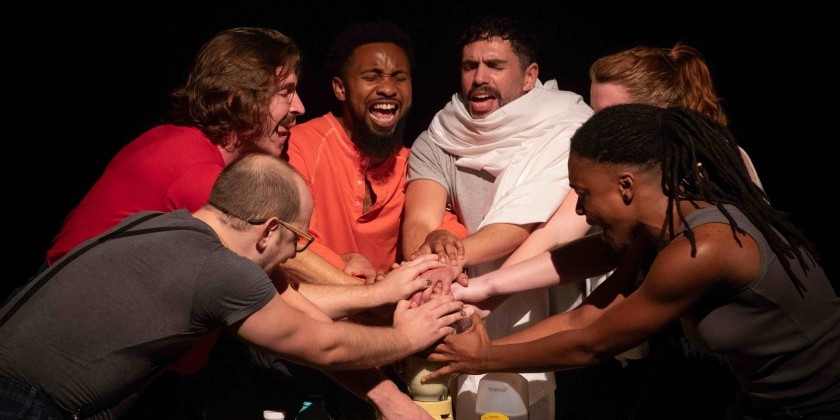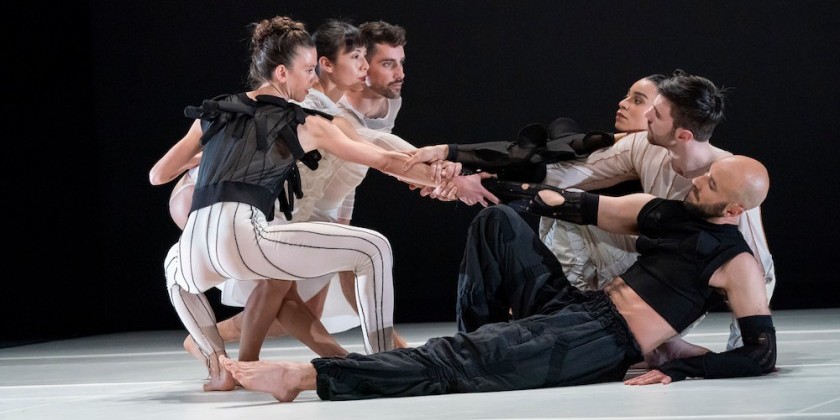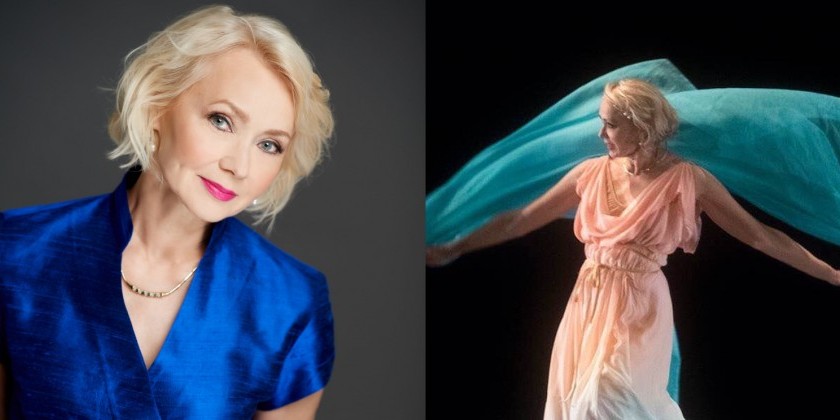MOVING PEOPLE: Ishmael Houston-Jones on His Favorite Post-show Meal, How He Starts His Curatorial Process, and the One Thing He Still Loves about New York
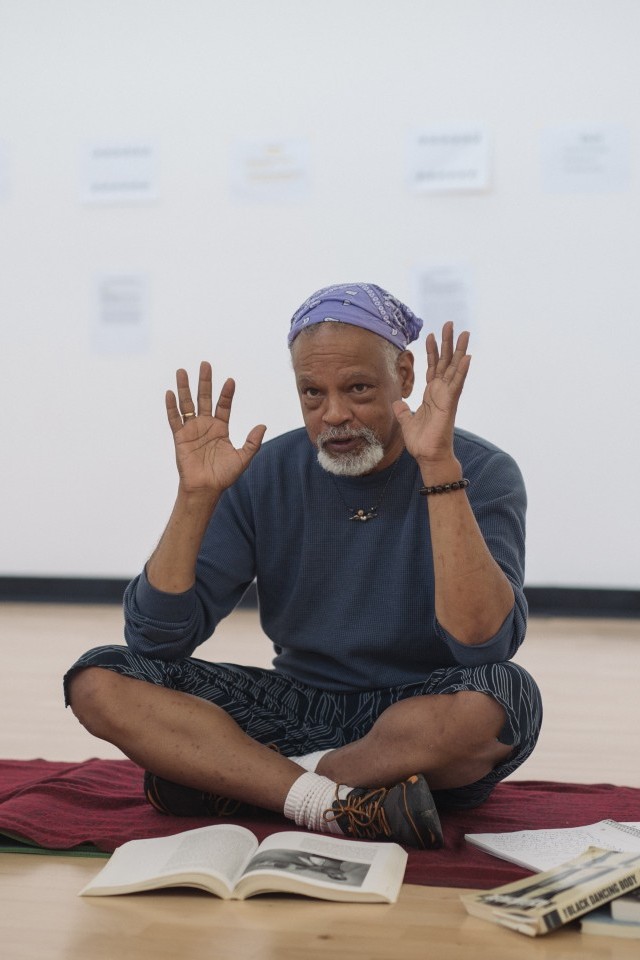
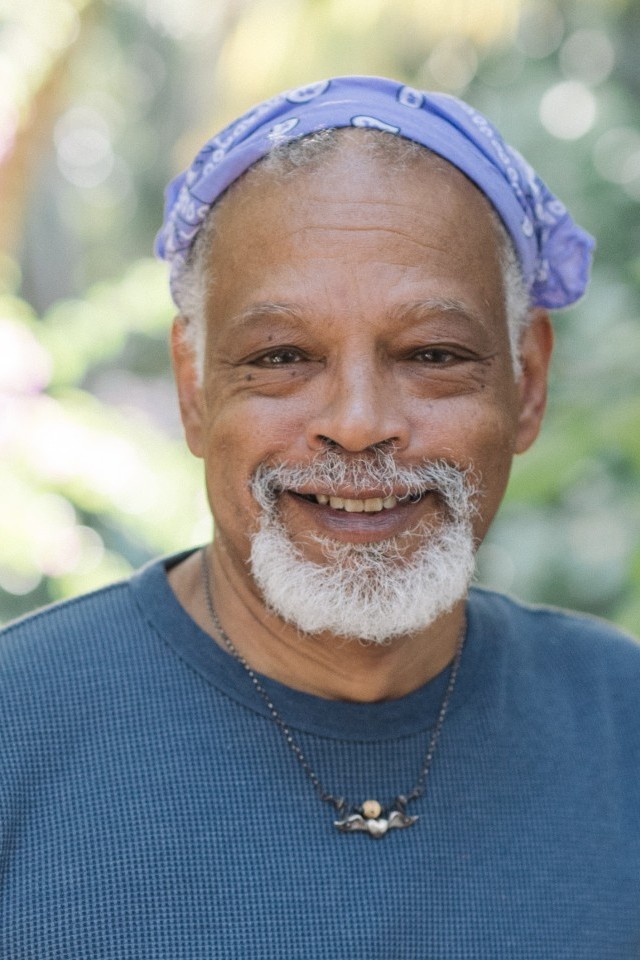
Ishmael Houston-Jones
Biography
Ishmael Houston-Jones is an award winning choreographer, author, performer, teacher, and curator. His improvised dance and text work has been performed in New York, across the US, and in Europe, Canada, Australia, and Latin America. Drawn to collaborations as a way to move beyond boundaries and the known, Houston-Jones celebrates the political aspect of cooperation.
Houston-Jones and Fred Holland shared a 1984 New York Dance and Performance “Bessie” Award for Cowboys, Dreams and Ladders, which reintroduced the erased narrative of the Black cowboy back into the mythology of the American west. He was awarded his second “Bessie” Award for the 2010 revival of THEM, his 1985/86 collaboration with writer Dennis Cooper and composer Chris Cochrane. In 2017 he received a third “Bessie” for Variations on Themes from Lost and Found: Scenes from a Life and other Works by John Bernd. In 2020 he recieved a fourth "Bessie" for Service to the Field of Dance. Houston-Jones is the DraftWork curator for works-in-progress at Danspace Project in New York. He has curated Platform 2012: Parallels which focused on choreographers from the African diaspora and postmodernism and co-curated with Will Rawls Platform 2016: Lost & Found, Dance, New York, HIV/AIDS, Then and Now both at Danspace Project.
Photos: at the Rauschenberg Residency 2018 by Mark Poucher
My earliest memory of dancing is ___________.
dancing in the living room to the soundtrack of West Side Story after I’d seen the movie. I broke a ceiling lamp.
I knew I had to be involved with dance when . . .
It was not immediate, more of an evolution. I was a theater kid in high school. The community theater where I grew up, (Harrisburg, PA,) was offering free dance classes for teenagers so I took my first class when I was 16. It was jazzy modern with a little Horton and West African thrown in, (although I wouldn’t’ve been able to name those as such at the time.) I liked dance because I had a lot of energy but didn’t really like sports and unlike theater, there were no lines to memorize. I went to college as an English major, planning on becoming a journalist or poet. Did some street theater. Lived on Israeli kibbutzim for a year. Took one dance class that year. When I returned to The States, I moved to Philadelphia at age 21. I began auditing classes at Temple U. and taking Friday Night improvisation workshops with Group Motion Media Theater. Group Motion asked me to be in their next piece. It was the first time I thought of dance as a life option.
My motto is ___________.
yes
After all these years, one thing I still love about New York is this: ___________.
I’ve never had a driver’s license, so I love that NYC is not about car culture. That public transportation kinda works. And for better or worse, people must deal with one another, up close a personal on a daily basis. This also exposes New Yorkers to people of different backgrounds and cultures, which I think is generally a good thing. And related to that is the variety of food – Korean, North Indian, South Indian, vegan, Soul, Moroccan, Israeli, Northern Italian, Sicilian, steak houses, sushi Mexican, Vietnamese, kosher, Ethiopian... Most are available walking distance from my place in the East Village.
___________ is overrated.
Comfort
(I may come back to this one.)
___________ is underrated.
The fragility of the democracy in which we live, (speaking of we Americans)
Recent history has shown that it is possible that those conditions that benefit, support and protect the common good, imperfect that they are, can be so easily be corrupted and made even more ineffective by forces from within or without.
I would like to learn to ___________.
speak a language other than English really well
I start my curatorial process by ___________.
trying to answer unanswerable questions
One piece of advice I’d give to choreographers applying to DraftWork at Danspace Project is this: ___________.
When the program is happening in-person again, come to the series, talk to me at the reception afterwards, (over wine or sparkling water,) tell me what you’re up to and when you have a show or showing coming up. Bonus answer: Do NOT email me once a week!
The most expressive part of the body is ___________.
hmm — you tell me. Maybe eyes, maybe hands? I use my limbs and extremities more than my torso and core.
If I could curate a show with three deceased artists, they would be ___________, ___________, ___________ because ___________.
Trisha Brown with Allen Ginsberg and Cecil Taylor. I’m an old Beatnik at heart. The only time I ever saw Trisha dance to spoken word was the very first time I saw her in the 1970s performing Accumulation with Talking Plus Water Motor, which had a profound effect on me and all my future work. I think Ginsberg is playful, rhythmic, and profane in a way that I think Trisha could relate to. And Cecil Taylor in his wildest improvisations would be a perfect disruption to the two of them.
My favorite post-show meal is ___________.
pasta (almost any kind except Angel Hair) and wine
Maybe a salad. Or on another night Chirashi at a sushi bar with sake or beer.
Writing is to dance as ___________ is to ___________.
mango sorbet drizzled with Campari
chocolate truffle brownies straight from the oven
They both are very enjoyable and satisfying (art pursuits or desserts) but in very different forms that I can sometimes combine.
Practices that have kept me sane during the pandemic are ___________.
weekly online Sunday service with Middle Collegiate Church, weekly psychotherapy, early evening walks around the parks in the neighborhood, checking in with folks, cooking.
Something that gives me energy is ___________.
teaching
If I could revisit a moment in my life, it would be this one: ___________.
The first time I was in Amsterdam. I was on tour with Ping Chong in the 1980s. We were staying in a hotel in the Red Light District between two churches. It was spring and the markets were filled with tulips; I had bought bunches of them that I put in pitchers, glasses, ice buckets and waste paper baskets. It was a bright sunny day and the bells were ringing from both churches. I sat at my window thinking, it would be OK if I died at that moment.
A project I hope to pursue once we can gather in the theater again is ___________.
TRY, a collaboration that I am currently working on with José Abad, Snowflake Calvert, Keith Hennessy and Kevin O’Connor. We’ve been rehearsing since September 2020, but since they are all on the West Coast and I’m in New York, all of our rehearsing, (and team teaching via Movement Research,) has been over Zoom. I’ve also been writing a book about the current generation of Black Dance experimentalist that has been really slow going. One would think it’d be easy to write during quarantine, but for me, it hasn’t been so. I need to be out and about seeing people and things to get ideas flowing.
The process of writing my book, "Fat and Other Stories: Some Writing About Sex," was . . .
Honestly, going through all of my old hard drives and finding fragments of free writes I’d written on the subject for over 40 years. There was quite a bit. I then just had to collage it all together.
Purchase Fat and Other Stories: Some Writing About Sex HERE.
An unexpected pursuit I enjoy is: ___________.
Embarrassingly it’s teaching. When I was younger, I used to think of teaching as this thing I only did in order to (sometimes) support my art practice. It wasn’t until fairly recently that I realized that teaching is a vital part of my art practice, I learn a lot by doing it, and I do, in fact, enjoy it a lot.
I hope 2021 will bring the following: ___________.
An understanding that there is no “normal” that we should strive to get back to. Although the COVID-19 pandemic was very disruptive, disruption is not necessarily a negative thing. In terms of politics, there is growing awareness that more and more diverse voices need to be heard and listened to. In terms of education, while there is great value in being in the same room or studio with everyone, there was actually something magical about teaching the same class to people in Denmark, Iceland, New York, St Louis, California and New Zealand at the same time. It was clumsy because it was new, but it showed a possibility of teaching and learning in a different way. And as far as performance is concerned, again, there is something very special about sharing time and space, but there is value for time-based artists to seriously consider expanding the idea of the here/now and to create new ways of conceiving how to shape and articulate the power of presence when everyone is not inhabiting the same time and place.
MOVING PEOPLE: Celebrating People Who Power The Dance World!
Do you know of a MOVING PERSON we should celebrate on The Dance Enthusiast?
Contact us at info@dance-enthusiast.com
Please take a look at our 10th and 11th Year — People Who Power The Dance World — The Dance Enthusiast A to Z





